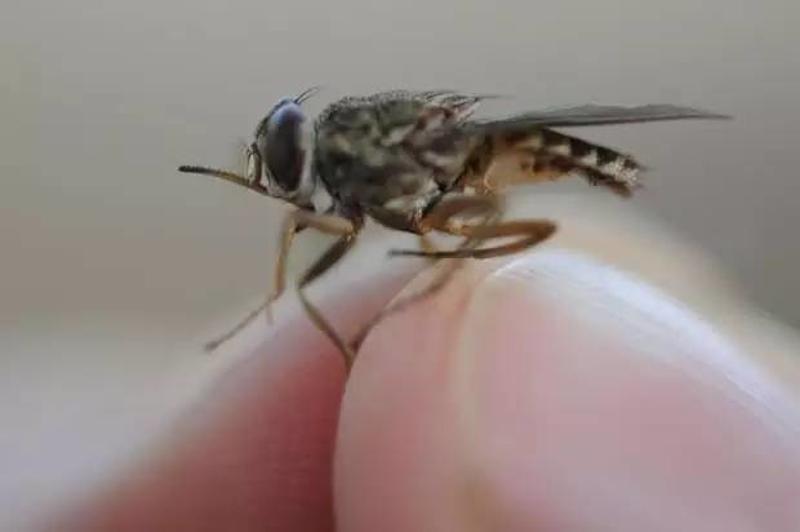Know about Vector-borne Diseases 了解病媒传播的疾病
Vector-borne diseases
Vector-borne diseases are illnesses caused by pathogens and parasites in human populations. Every year there are more than 1 billion cases and over 1 million deaths from vector-borne diseases such as malaria, dengue, schistosomiasis, human African trypanosomiasis, leishmaniasis, Chagas disease, yellow fever, Japanese encephalitis and onchocerciasis, globally.
Vector-borne diseases account for over 17% of all infectious diseases.
病媒传播的疾病
病媒传播的疾病是由人群中的病原体和寄生虫引起的疾病。每年疟疾、登革热、血吸虫病、非洲人类锥虫病、利什曼病、恰加斯病、黄热病、日本脑炎和盘尾丝虫病在全世界导致10亿多起病例和超过100万人死亡。
病媒传播的疾病占所有传染病的17%以上。

Key facts

Vector-borne diseases account for more than 17% of all infectious diseases, causing more than 1 million deaths annually.
More than 2.5 billion people in over 100 countries are at risk of contracting dengue alone.
Malaria causes more than 400 000 deaths every year globally, most of them children under 5 years of age.
Other diseases such as Chagas disease, leishmaniasis and schistosomiasis affect hundreds of millions of people worldwide.
Many of these diseases are preventable through informed protective measures.
重
要
事
实
病媒传播的疾病占全部传染病的17%以上,每年导致100多万人死亡。
全世界100多个国家的25亿多人面临感染登革热的风险。
疟疾每年在全世界导致40多万人死亡,其中大部分为五岁以下儿童。
恰加斯病、利什曼病和血吸虫病等其它疾病影响全世界数亿人。
很多病媒传播的疾病都可以通过知情防护措施加以预防。

Main vectors and diseases they transmit
主要病媒及其所传播的疾病
Vectors are living organisms that can transmit infectious diseases between humans or from animals to humans. Many of these vectors are bloodsucking insects, which ingest disease-producing microorganisms during a blood meal from an infected host (human or animal) and later inject it into a new host during their subsequent blood meal.
Mosquitoes are the best known disease vector. Others include ticks, flies, sandflies, fleas, triatomine bugs and some freshwater aquatic snails.
病媒是指能够在人和人之间或者从动物到人传播传染病的生物体。许多病媒是吸血昆虫,在从被感染宿主(人或动物)身上吸食血液时摄入产生疾病的微生物,然后在随后吸食血液的过程中将其注入新宿主体内。
蚊子是最为人所知的病媒。其它病媒还包括蜱、蝇、沙蝇、跳蚤、锥蝽和一些淡水螺。

Mosquitoes 蚊子
Aedes 伊蚊
Chikungunya
基孔肯雅热
Dengue fever
登革热
Rift Valley fever
裂谷热
Yellow fever
黄热病
Zika
寨卡
Anopheles 按蚊
Malaria
疟疾
Culex 库蚊
Japanese encephalitis
日本脑炎
Lymphatic filariasis
淋巴丝虫病
West Nile fever
西尼罗热

Sandflies 沙蝇
Leishmaniasis
利什曼病
Sandfly fever (phelebotomus fever)
沙蝇热(白蛉热)
Ticks 蜱
Crimean-Congo haemorrhagic fever
克里米亚-刚果出血热
Lyme disease
莱姆病
Relapsing fever (borreliosis)
回归热(疏螺旋体病)
Rickettsial diseases (spotted fever and Q fever)
立克次体病(斑疹热和Q热)
Tick-borne encephalitis
蜱传脑炎
Tularaemia
土拉菌病

Triatomine bugs 锥蝽
Chagas disease (American trypanosomiasis)
昏睡病(非洲锥虫病)

Tsetse flies 采采蝇
Sleeping sickness (African trypanosomiasis)
昏睡病(非洲锥虫病)

Fleas 跳蚤
Plague (transmitted by fleas from rats to humans)
瘟疫(由跳蚤从老鼠传播给人)
Rickettsiosis
立克次体病

Black flies 黑蝇
Onchocerciasis (river blindness)
盘尾丝虫病(河盲症)

Aquatic snails 水生螺
Schistosomiasis (bilharziasis)
血吸虫病(裂体吸虫病)
(来源:世界卫生组织)
统筹:宁可儿
整理:雷未明
美编:晓马哥

往期精选【戳下方标题】


《万一家人中了诺如怎么办?》


《又有学校停课!防控诺如你要这么做!》


 快来抢沙发
快来抢沙发




